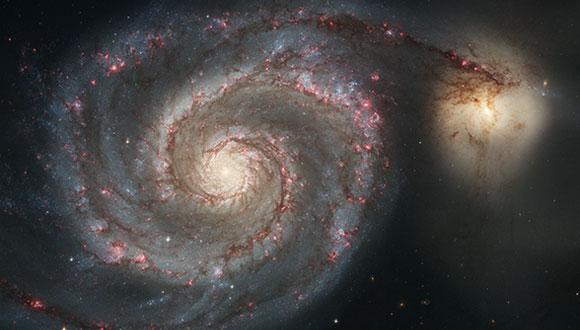Astronomy & Astrophysics Seminar: What sets the gas density in AGN hosts?
Dr. Jonathan Stern, Heidelberg
Abstract:
The pressure from the radiation of active galactic nuclei (AGN) can exceed the typical gas pressure in the interstellar medium by many orders of magnitude. Therefore, the radiation pressure will either accelerate or compress the exposed gas. We address the compression scenario, and find the analytical / numerical hydrostatic solution for the compressed illuminated gas. This solution exhibits two distinct properties:
-
The gas density of an illuminated gas cloud scales as the distance of the cloud from the nucleus to the power of -2. We show that this density vs. distance relation is observed over a dynamical range of ~10^4 in distance and ~10^8 in gas density. Thus, the AGN radiation pressure sets the density of the illuminated gas throughout the host galaxy. This relation is potentially a direct observation of AGN feedback.
-
The hydrostatic solution implies a unique cloud structure, independent of the ambient pressure. This solution includes a low density highly ionized surface layer, and a higher density lower ionization inner layer. We compare this slab structure with available observations.
Seminar Organiser: Prof. Rennan Barkana


